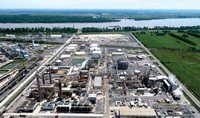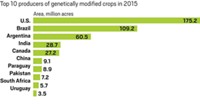Advertisement
Grab your lab coat. Let's get started
Welcome!
Welcome!
Create an account below to get 6 C&EN articles per month, receive newsletters and more - all free.
It seems this is your first time logging in online. Please enter the following information to continue.
As an ACS member you automatically get access to this site. All we need is few more details to create your reading experience.
Not you? Sign in with a different account.
Not you? Sign in with a different account.
ERROR 1
ERROR 1
ERROR 2
ERROR 2
ERROR 2
ERROR 2
ERROR 2
Password and Confirm password must match.
If you have an ACS member number, please enter it here so we can link this account to your membership. (optional)
ERROR 2
ACS values your privacy. By submitting your information, you are gaining access to C&EN and subscribing to our weekly newsletter. We use the information you provide to make your reading experience better, and we will never sell your data to third party members.
Business
A Great Time To Make Fertilizers
Demand for corn-derived ethanol is spurring growth for nutrients industry
by William Storck
May 14, 2007
| A version of this story appeared in
Volume 85, Issue 20

FERTILIZER PRODUCERS in the U.S. and Canada are glowing as demand for their products soars. The increase in demand, however, is not coming from growers of crops destined for traditional food and animal feed markets but rather for the fermentation of corn into fuel-grade ethanol.
A survey of 86,000 farmers by the Department of Agriculture determined that growers will plant about 90.5 million acres of corn this year, 14% more than in 2006. The American Farm Bureau Federation is a little more cautious in its projection, predicting only an approximately 10% increase in planted corn acreage.
Whatever the increase, it's significant for a crop for which planted acreage actually declined at an average annual rate of 0.1% between 1996 and 2006. Last year, planted acreage was at its lowest point since 2001—78.3 million acres—as higher costs cut into planting. Harvested corn acreage also declined in 2006, falling about 6.0% from 2005 to 70.7 million acres.
According to the USDA's Economic Research Service, ethanol is the reason for the growing corn demand. In 2006, 2.15 billion bushels of corn was used to produce fuel alcohol, more than triple the 706 million bushels used in 2001. The figure for 2006 was 34% greater than that for 2005 and represented 61% of corn going to food, seed, and industrial uses. The demand for corn to make alcohol fuels in 2006 also represented 20.4% of that year's 10.5 billion-bushel total corn production, up from 14.4% in 2005 and just 7.4% in 2001.
The increases in demand are not likely to stop soon. As of February, according to an article in this month's issue of the USDA magazine Amber Waves, the annual capacity of the U.S. bio-based ethanol sector was 5.6 billion gal, and plants under construction or expansion are likely to add another 6.2 billion gal of capacity. "If this trend and the existing and anticipated policy incentives in support of ethanol continue," the article says, "U.S. ethanol production could easily reach 11 billion gal in 2011."
Fertilizer makers may not reap the full benefit of the increase in corn acreage because farmers are cutting back planting of other crops to make room for more corn.
USDA says the increase in corn acreage this year will be offset by lower soybean acreage in the Corn Belt and the Great Plains. Soybean plantings will cover 67.1 million acres, the lowest total since 1996 and a decrease of 11% from last year. Cotton planting will be down 20% from last year's to 12.1 million acres, while rice planting is expected to fall 7% to 2.64 million acres.
Still, the prospect of greater corn planting is bolstering North American fertilizer producers. The four biggest fertilizer companies???Mosaic and Terra Industries in the U.S. and Canada's Agrium and PotashCorp???all turned in much improved results in the first quarter of 2007 compared with the same period a year earlier.
Mosaic posted sales for its third fiscal quarter, which ended on Feb. 28, of $1.28 billion, up 19% from a year earlier. The company's earnings from continuing operations, excluding unusual items, totaled $21.2 million, compared with a loss in the year-earlier period.
Sales at Terra in the quarter ending on March 31 were $502.3 million, a 25.9% increase over the comparable quarter in 2006. Earnings, excluding nonrecurring items, totaled $30.3 million, compared with a loss of $25.3 million in the same period in 2006.
In Canada, Agrium's first-quarter sales rose 25.2% to $861.0 million. And although the company showed an $11.0 million loss in the period, this result is much better than the $48.0 million loss it posted in the comparable 2006 quarter.
PotashCorp, however, reported extremely good results. The company's sales for the period rose 34.0% to $1.15 billion. Meanwhile, the firm enjoyed earnings of $198.0 million, the highest quarterly amount in its history and a 57.8% increase over the same three months in 2006.
All four of the producers are optimistic about 2007. "Shipments are strong for both phosphates and potash," says Mosaic Chief Executive Officer Jim Prokopanko, "as the North American spring season is off to a good start and export demand remains strong."
Terra CEO Michael L. Bennett says his firm "experienced strong demand for our products as U.S. growers began to act on their intentions to plant a projected 90 million-plus acres of corn this growing season." His outlook for nitrogen fertilizer producers for the remainder of the second quarter is positive as well. "We expect the planting season to be vigorous and likely extended due to cool, wet weather in many parts of the Corn Belt."
In a statement accompanying its first-quarter results, Agrium says the outlook for global and North American markets continues to be supported by strong economic activity and rapid growth in demand for grain and oilseeds used for biofuels production. It notes that corn prices are up more than 60% compared with prices in the spring of 2006, despite the prospects of record corn production in 2007. Growth in biofuels production is also supporting the sugarcane market in Brazil and palm oil markets in Asia.
Agrium warns, however, that a risk to the demand outlook in North America is that cool, wet weather could delay planting. This would impact total seeded acreage, including the number of acres that are planted with corn.





Join the conversation
Contact the reporter
Submit a Letter to the Editor for publication
Engage with us on Twitter